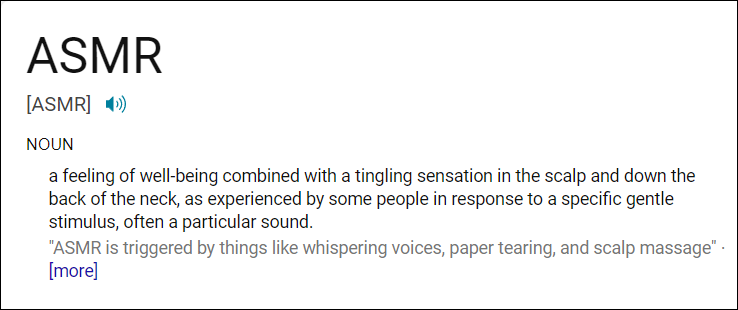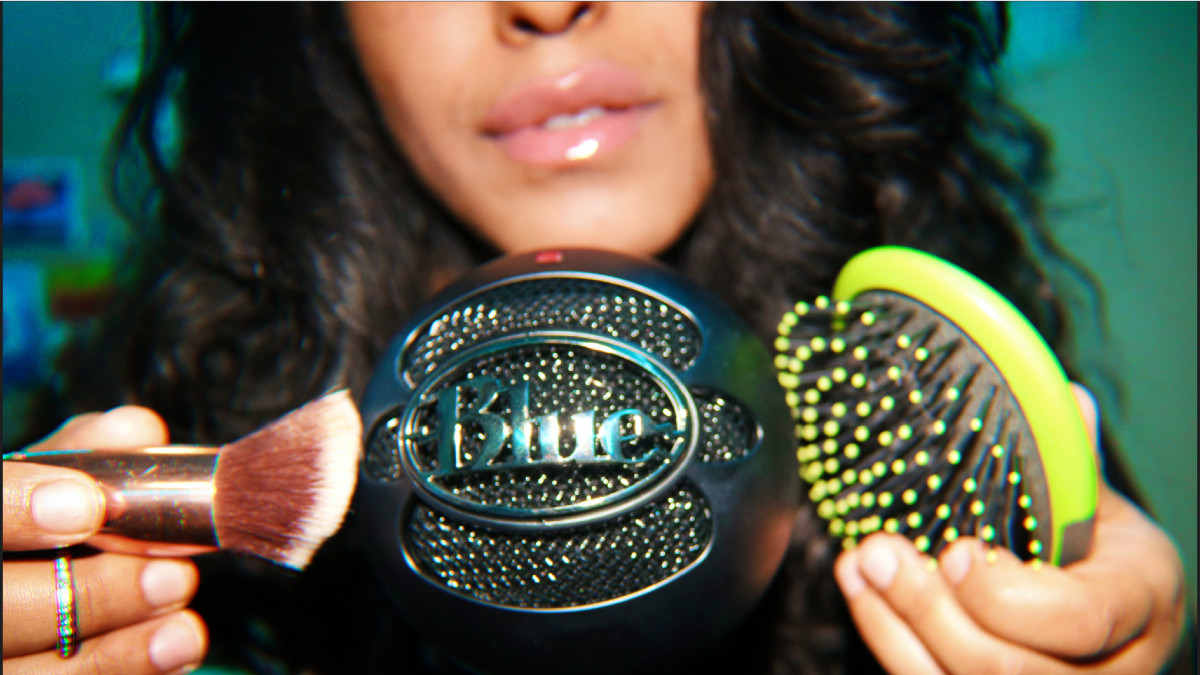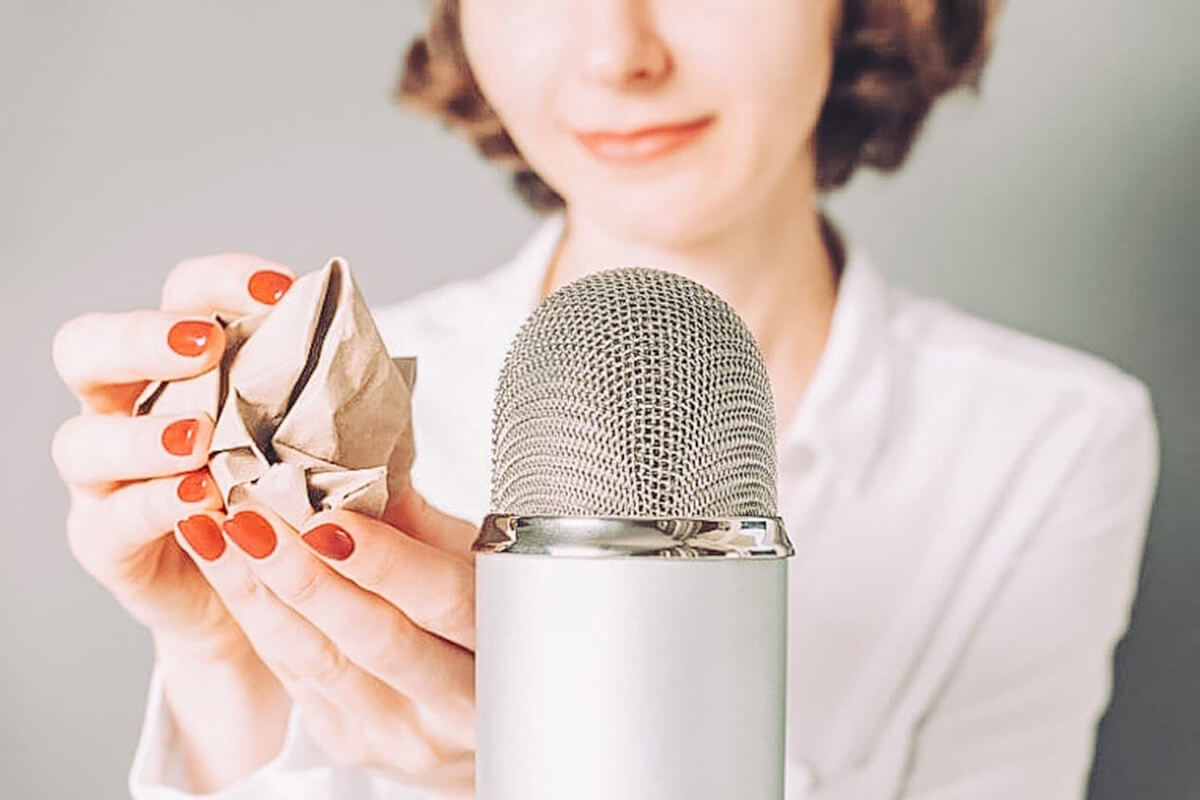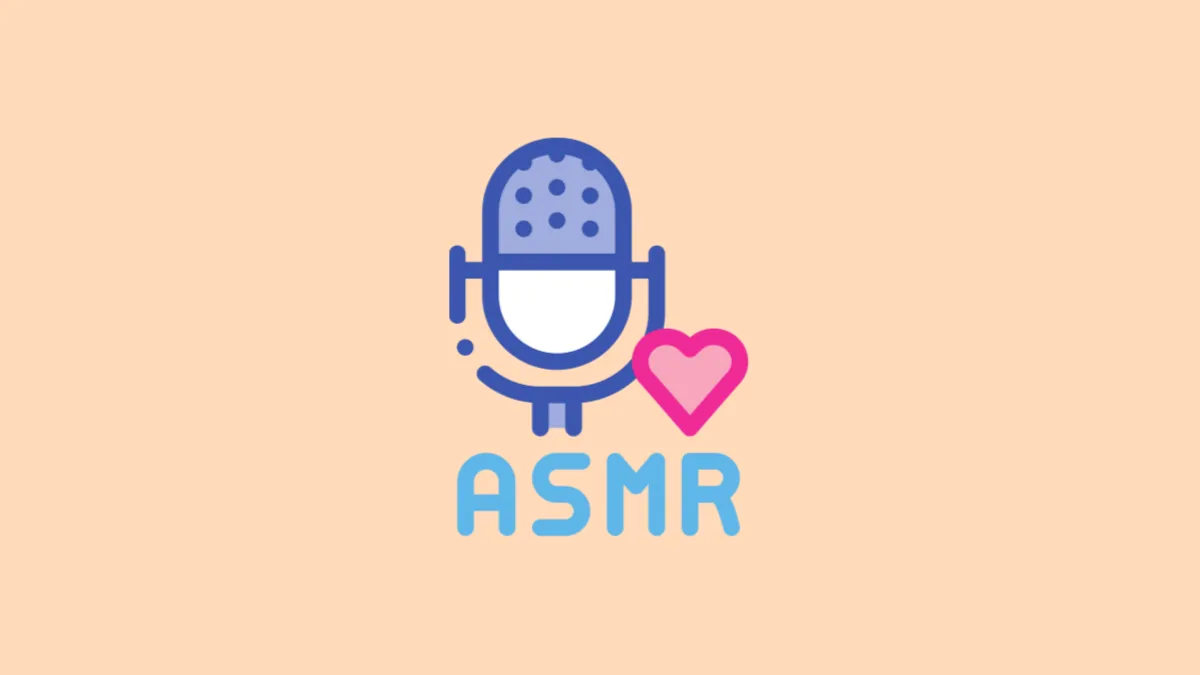If you’re an active social media user, you may have noticed something get super popular a couple of years ago. ASMR. This type of video shot up on platforms like YouTube, Twitch, and TikTok from 2017 onwards. But it was in the market as a magnetizing format of unconventional therapy for nearly 10 years before its recent fame.
The concept has an older, but nonetheless, contemporary origin. The art of and traction for ASMR are both increasing and constantly evolving over the years. But, what does ASMR even mean? Why is it so popular? Most importantly, why does the format of ASMR seem initially creepy and discomforting? That’s a subjective argument, nevertheless.
What Does ASMR Mean?

Before it became a viral trend on the internet, ASMR began as an experiment and a discussion to talk about a peculiar human response to certain stimuli. So, ASMR, expanded to Autonomous Sensory Meridian Response is not a genre of videos, it is essentially our physical and/or psychological response to stimulating visual, auditory, or tactile triggers.
This response is characterized by skin tingling that is typically felt from the back or the top of the head to the bottom of the spine. Sometimes, ASMR (Autonomous Sensory Meridian Responses) tends to only stay in the head and not travel too far down the spine. Nevertheless, it’s a pleasurable experience — with or without the tingles.
ASMR was originally (sometimes still) referred to as a ‘brain orgasm’ or ‘head orgasm’ due to the intense feelings of relaxation, comfort, and warmth it elicits. Today, the more common way of referring to ASMR is ‘brain massage’.
Although ASMR is a physiological response to respective stimuli, it is not provoked in everyone, and there is no set cause for this inconsistency. This means, not everyone would feel the tingles, necessarily, but it is possible that anyone can be relaxed and sometimes, feel euphoric, after an ASMR session.
When Did ASMR Begin and Who Started it?
ASMR is a bodily reaction to attention or auditory induced stimuli. Evidently, it’s not a new phenomenon as it arises from the human body. We’ve always had ASMR, but, the concept and the terminology were coined only in 2010. However, this is not when the unofficial ASMR discussion began.
A profile called ‘okaywhatever’ began a thread called ‘Weird sensation that feels good’ in 2007 on steadyhealth.com. The user wrote a heartfelt post on these weird sensations and their responses to the same and even asked for ‘Help’ on the matter — but in a positive way so as to understand what was going on in their body.
The discussion followed a thread of about 300 responses, that included Jennifer Allen possibly without a username, as a participant in the thread. She expressed interest to do some research into this strange yet beautiful feeling.
Jennifer further devised the terminology for these weird sensations — Autonomous Sensory Meridian Response, in 2010. She also started a Facebook group on ASMR and launched asmr-research.org; a site focussed on diving deeper into ASMR. People began talking about, relating to ASMR, and experiencing more such content post this discovery.
Why Do We Feel the Way We Feel With ASMR?

Anyone who’s new to ASMR would instantly feel uncomfortable. ASMR content is something many of us are new to and besides, this content format is something that has never happened before on any platform. So, the discomfort is understandable.
ASMR content, at its core, is intimate. ASMR stimulus is warm, close, and personal. The last time we felt this kind of non-sexual intimacy was when we were babies. Now, that’s a long and forgotten memory!
The reason why we get uncomfortable with (non-sensual) ASMR content at first is that it provides an intimacy that we only remember in a sexual context — given that that’s our most recent experience with such triggers (unless you aren’t sexually active, of course. Then, your response to ASMR content would be very different).
But, as you consume ASMR content, you’ll realize that it can be incredibly calming. Our body’s memory of its infancy is the reason behind the soothe and eventual yet unpredictable addiction to this content niche.
What’s the Point of ASMR? Does it Help?
Now that ASMR is all over the internet and most people are beginning to enjoy it, it’s important to address the elephant on this page. What’s the point of ASMR content? Is there anything more than just relaxation to it? Of course!
ASMR is therapeutic. When we have an autonomous sensory meridian response to a relevant stimulus, we’re not just relaxed mentally, but physically as well. Science tells us that ASMR eases a heavy heart rate and is also very effective in inducing sleep.
Since ASMR content facilitates relaxation, it’s a great remedy for stress, anxiety, and insomnia. Some users have also reported feeling alleviated, even just for a little while, from depression, phobia, and other anxiety-related mental disorders. Besides, certain ASMR formats like personal attention, ASMRotica, etc., also help loneliness.
Another benefit of ASMR is the content’s evident power to attract focus. Hence, dedicated ASMR videos (such as aggressive movements, hand gestures, and following instructions) can help people with ADHD by moving; physically and verbally, at a pace that is profoundly suitable to a person with ADHD.
What Are the Types of ASMR Triggers?

The stimuli that call for our ASMR are called ‘triggers’. Offline, any physical sensation that evokes a tingly response is an ASMR trigger, and online, there are three major categories of triggers. Although they are differentiated into separate trigger types, more often than not, all three categories overlap to provide the perfect ASMR.
Visual Triggers
Visual triggers for ASMR videos must be consumed visually — you can play them in the background but that defeats the purpose. Triggers like cat’s tail, plexiglass, hand movement (aggressive and gentle), personal attention (like face touching, makeup, manicure, brushing, etc) are some examples of visual ASMR triggers.
If you’re having trouble concentrating, then visual ASMR can be the ideal ASMR content for you. Visual ASMR is also useful for people with ADHD. These videos help improve focus and firstly, bring about that much-needed concentration!
Audio Triggers
Audio triggers are best to play in the background. You can listen to them while you work, study, or even sleep. You could also watch videos with audio triggers but they’re not particularly made to provide visual ASMR triggers. Echoes, mouth sounds, fireplace crackling, crunching, snipping, tapping are all examples of audio triggers.
Besides, many ASMRtists (ASMR artists or creators who make ASMR content) create exclusive ASMR triggers just for your ears! Ear massaging, ear cleansing, ear eating, and many other types of enhanced triggers are precisely made to pacify you auditorily.
Tactile Triggers
Another type of trigger is the ‘tactile’ trigger. These triggers focus on sensations of touch and physical movement on various textured surfaces. Tactile triggers often merge into both audio and visual formats as they are pleasurable in both ways. Tactile triggers are heavily visual just as they are auditory. Tapping (nails, fingers, teeth), floor scratching, scraping, brushing, are tactile trigger examples.
Essentials for ASMR Beginners?
ASMR content gives a pretty straightforward understanding of the skill and reception of ASMR. If you are a beginner to ASMR content these obvious parameters may not pop right up. So, here are a few tips to fully relish the triggers and favorably deliver ASMR (if you’re one to have this sensory response, of course).
To correctly and wholly tune into the mood that would evoke ASMR you need to do a few things. These are some beginner tips that can help enjoy the experience intended by triggers.
Relax
The first rule of thumb when it comes to ASMR is ease. You cannot enjoy ASMR content if you are agitated. It’s okay to be stressed, as ASMR can help relieve it. But, it’s important to be as relaxed as possible while consuming ASMR content.
Open your mind
The next important essential as a listener/viewer is to keep an open mind. ASMR content is exponentially different from any kind of content you may have been exposed to till now.
If you’re watching videos, the visuals may make you uncomfortable and if you’re only listening to audio ASMR, some sounds may be arousing as well. But! Give it time. ASMR is meant to be pleasurable; most times, in a non-sexual way.
Max volume
ASMR content is often, soft. All triggers are amplified and most triggers are characteristically gentle. So, to have a great ASMR experience, it is recommendable to have your volume at 100 — unless the content’s sound itself is loud, then set the volume to your liking.
Use earplugs/headphones
When we advise shooting your volume to a 100, we don’t mean it on speaker. This would negate the whole point of a personal and comforting ASMR session. Instead, maximize your volume while using headphones or earplugs. This is the best way to enjoy ASMR content.
Focus
The last essential while consuming ASMR content is to give it your complete attention. Many times, you may not feel the tingles because distractions can keep your body from reciprocating to triggers. Besides, ASMR is an attention-induced response — it is crucial to pay attention to ASMR content to fully relax!
Analysis

Despite being a natural reaction to certain visual, auditory, and tactile stimuli, ASMR is a new form of content and a newly discovered aspect of the human body. As exciting as that is, it is that challenging to reach people because of the way ASMR content is.
ASMR is a reaction to stimuli that we don’t experience quite often. In fact, for many people, it’s something we never experience. ASMR typically tends to the physique. The triggers mostly consist of subtle actions that are systematically intensified.
ASMR content can (and it will) seem bizarre at first because it is digging (and digging deep) into these movements and actions that we find soothing but have never completely indulged to experience a full-blown brain-gasm. ASMR content does that — and this is what may feel uncomfortable, and low-key guilt-driving.
Wet sounds, mouth sounds, whispers, fire crackling, finger tapping, teeth tapping, hair brushing, Q-tip sensations, texture brushing, and so many more little sounds are extremely pleasing to most of us. And most times, we only realize this after exposing to ASMR triggers. These sounds and sensations are alleviating and unusually relieving.
Though we may have briefly known them to be soothing, we may have not (or never) recurrently and moreover, deliberately indulged in this form of relaxation — only because it was never a thing before. We were simply oblivious to this type of relief — but ASMR content is here to surface our need for warmth and comfort, especially as adults.
Conclusion
ASMR is a new and upcoming relaxation technique that went on a well-deserved viral journey a couple of years ago. There are noticeable types of ASMR triggers, a list that will continue to expand and explore different niches of physical and psychological pleasure.
We hope, after reading this article, you will not shy away from experiencing the trance-like state ASMR provides — and discover new ASMR triggers while keeping a healthy base of your favorites!

